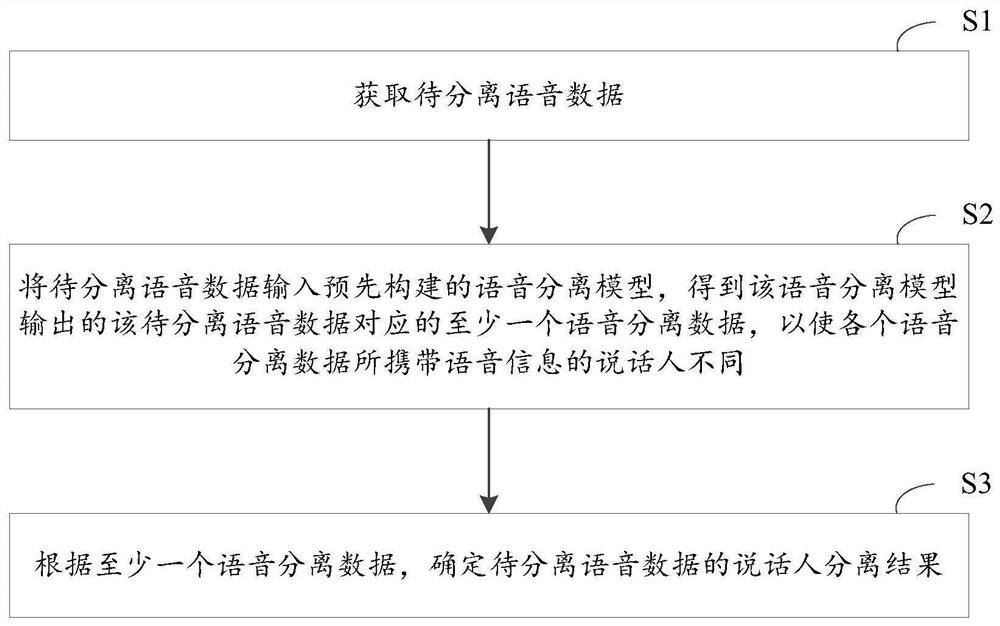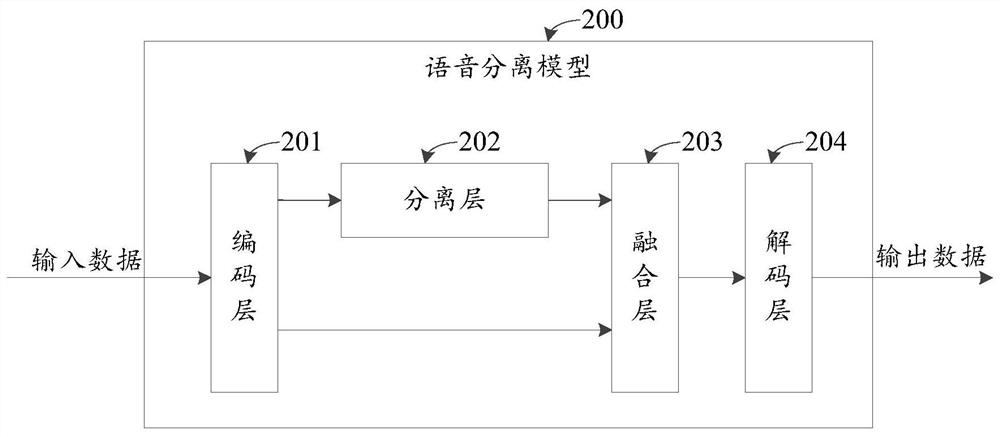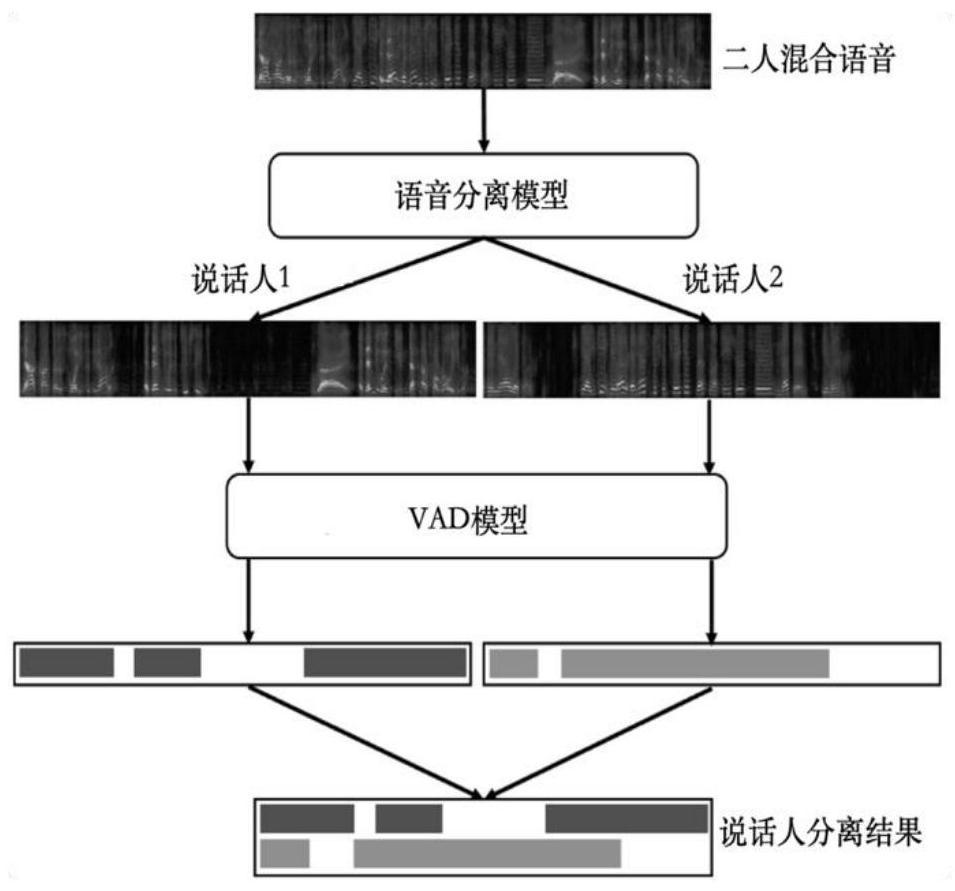Speaker separation method and related equipment thereof
A speaker separation and speaker technology, applied in speech analysis, instruments, etc., can solve the problems of low speaker separation accuracy and speaker separation.
- Summary
- Abstract
- Description
- Claims
- Application Information
AI Technical Summary
Problems solved by technology
Method used
Image
Examples
Embodiment 1
[0027] see figure 1 , which is a flow chart of a speaker separation method provided in the embodiment of the present application.
[0028] The speaker separation method provided in the embodiment of this application includes S1-S3:
[0029] S1: Obtain the voice data to be separated.
[0030] Wherein, the voice data to be separated refers to voice data that needs to be subjected to speaker separation processing; and the voice data to be separated includes voice information of at least one speaker. For example, the voice data to be separated may include voice information of N speakers. Wherein, N is a positive integer.
[0031] In addition, this embodiment of the present application does not limit the voice data to be separated, for example, the voice data to be separated may include at least one piece of overlapping audio data. Wherein, "overlapping audio data" refers to audio data generated by multiple speakers speaking at the same time.
[0032] In addition, in order to ...
example 1
[0086] Example 1, step 2311 may specifically include step 41-step 42:
[0087] Step 41: Arranging and combining the K pieces of predicted speech separation data corresponding to the g-th sample speech to obtain T permutations and combinations sequences corresponding to the K pieces of predicted speech separation data.
[0088] Step 42: According to the t-th permutation and combination sequence corresponding to the above K predicted speech separation data, the K pieces of predicted speech separation data and the K actual speech separation data corresponding to the g-th sample speech arranged in the first order respectively Establish a corresponding relationship among them, and obtain the corresponding relationship of the t-th candidate data corresponding to the g-th sample speech (as shown in formula (1)). Wherein, the "first order" can be preset; t is a positive integer, t≤T, and T is a positive integer.
[0089]
[0090] In the formula, Represents the corresponding rela...
example 2
[0092] Example 2, step 2311 may specifically include step 51-step 52:
[0093] Step 51: Permutate and combine the K actual speech separation data corresponding to the g-th sample speech, and obtain T permutation and combination sequences corresponding to the K actual speech separation data.
[0094] Step 52: According to the t-th arrangement and combination sequence corresponding to the K actual speech separation data, respectively establish the K prediction speech separation data corresponding to the K actual speech separation data and the g-th sample speech arranged in the second order Correspondence relationship, to obtain the tth candidate data correspondence relationship corresponding to the gth sample speech (as shown in formula (2)). Wherein, the "second order" can be preset; t is a positive integer, t≤T, and T is a positive integer.
[0095]
[0096] In the formula, Represents the corresponding relationship of the tth candidate data corresponding to the gth sampl...
PUM
 Login to View More
Login to View More Abstract
Description
Claims
Application Information
 Login to View More
Login to View More - R&D
- Intellectual Property
- Life Sciences
- Materials
- Tech Scout
- Unparalleled Data Quality
- Higher Quality Content
- 60% Fewer Hallucinations
Browse by: Latest US Patents, China's latest patents, Technical Efficacy Thesaurus, Application Domain, Technology Topic, Popular Technical Reports.
© 2025 PatSnap. All rights reserved.Legal|Privacy policy|Modern Slavery Act Transparency Statement|Sitemap|About US| Contact US: help@patsnap.com



